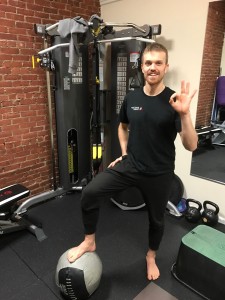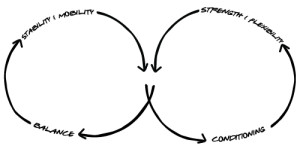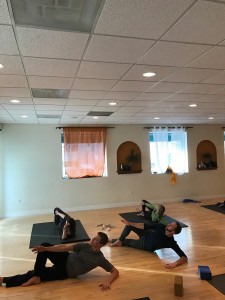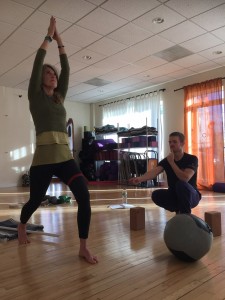I get asked all the time, “Rob how do I get better?” ‘Better’ is relative to the circumstance at hand, but generally speaking the person I’m training is asking about how to improve the functionality, stability, and strength of their body. Sure we could dive into eating habits, sleep cycles, and mental states, and that’s why I created the FRESH approach (fitness, recovery, eating, sleep, habits), but today we’ll leave this part of it alone. ‘Better’ in this post is going to centralize around physical autonomy and how to get it.
There’s really only a few things you need to find it: strength and flexibility, stability and balance, and mindful control. You can also check out the image below.
Lets starts with the first one; strength and flexibility. You need this because it is the engine that helps move the system (you’re the system). Strength makes life easier, injuries less likely, and builds confidence in your brain’s ability to do work. Flexibility on the other hand (the correct kind of flexibility, not loosey-goosey slouch into your joints flexibility) keeps you growing. Flexibility will create the elasticity in your fascial connections, but will also teach you about how to relax your muscles and breath consciously. Muscles have TWO functions, contraction and relaxation. Strength work typically only focuses on either concentric or eccentric contractions, whereas flexibility requires you to relax, release, and breathe into the ‘ungluing’ of your body. Strength keeps you grounded where you thought you were weak and flexibility helps you reach beyond where you thought you could reach to. If you’re truly looking to improve performance, you need both.
Secondly; stability and balance. Why do you need them? Simply put, if you are to train and be healthy long term you must understand yourself, know yourself, and see your own flaws. Balance will keep you conscious of where you are and stability will shed light on where you need to pay attention to. It is important to note that they are not the same thing, although similar. Balance is more of an internal lens that you access at any time to get in touch with what’s important to you in your body. Balance will also lead you to understanding your unique anatomy and how to move more optimally. Stability on the other hand is a tool to sharpen skills you already have while also showing you how to do things with more efficiency. If you can understand stabilization you’re on the road to balance and vice versa. With them training will never get boring and always evolve further, which brings us to our last point.
Mindful control of your body is the last ingredient to total autonomy. Understanding and developing a mental model of your body is going to help you get to the next level. Being able to feel, visualize, and control your body in intentional and deliberate ways will be what separates the advanced from the beginners. Mindful control is a lifelong journey, but it doesn’t mean you can’t start playing with it today. It is when you are able to move with precision and feel the part of your body working correctly that you start to build new neuralfascial pathways and proprioceptive awareness. And like anything else, with practice your motor control advances and your ability to communicate with more complex parts of your body improves. Mindful control is something that you have to do when practicing instead of performing. The reason for this is you want your parasympathetic nervous system to stay active, and the ‘fight-or-flight’ nervous system to be at bay. When you can accomplish this your breath can guide you to more specific parts of your body, like your big toe, or your diaphragm, or to your lateral rotators inside of your buttcheek. Most of us perform as our main fitness outlet, but I would encourage you to develop a practice, something where you aren’t distracted or racing in your brain, but a practice that you can be quiet with to listen to where your body is taking you. It is perhaps the most difficult, yet most necessary step in physical autonomy as it will keep you healthy, pain-free, and using your whole body as a system. Joint strength will naturally improve, as well as organ functioning, posture, and mental health.

All of these characteristics of physical autonomy lie under the umbrella of sustainability. Sustainability, figure out your pace, your rhythm, your body. Physical autonomy does not come easy, it is a lifelong journey that requires looking in and asking tough questions about why you do certain things the way you do. Think of your body as a twin sibling, a best friend, somebody you share a life with, and you want both parties to always get along. Learn from yourself and let your body be your teacher on what feels good, what feels hard, what you want to overcome, etc. If you plan on improving, living pain-free and without inflammation of the joints ask yourself, “what can I do to improve the health of my body?” This will likely take you down a rabbit hold that you want to approach with compassion, patience, and a whole lot of listening. Looking at your training regimen as ‘health-ness’ instead of fitness may help you delineate why you workout and help you figure out what you want health-wise for the long term. If you can figure out your health goals and body goals you’ll get closer to figuring out how you’re going to sustain the next 5, 10, 15, 20 years of health and exercise! Hell you’ll be able to start working on what you want long term today.
So there you have it, three keys to physical autonomy. A lifelong journey of learning how to reach a more embodied place in yourself.



